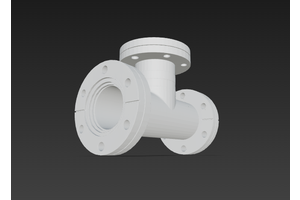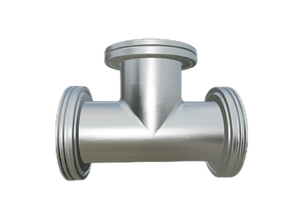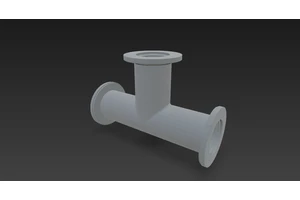The Working Principle of Vacuum Pumps
A vacuum pump is a critical device designed to remove gas molecules from a sealed space, thereby reducing the internal pressure and creating or maintaining a vacuum environment. These pumps are widely used in scientific research, semiconductor manufacturing, thin-film coating, freeze-drying, medical equipment, aerospace, and many other fields. Depending on their operating methods and the vacuum levels they achieve, vacuum pumps come in various types, each based on distinct working principles. Below is an overview of the fundamental mechanisms of several common types.
- Mechanical Vacuum Pumps (e.g., Rotary Vane Pump, Scroll Pump)
These pumps belong to the category of positive displacement pumps, which operate by mechanically changing the volume of a chamber to draw in and expel gas.
Take the widely used rotary vane pump as an example: Inside the pump housing, an eccentric rotor equipped with sliding vanes rotates. As the rotor turns, centrifugal force and springs push the vanes against the inner wall of the housing, dividing the chamber into two variable-volume compartments. On the inlet side, the volume increases during rotation, creating a negative pressure that draws in gas. On the exhaust side, the volume decreases, compressing the captured gas and expelling it through an exhaust valve into the atmosphere. This cycle repeats continuously, enabling sustained gas removal.
These pumps are typically used to achieve low (rough) to medium vacuum levels and often serve as backing pumps in multi-stage vacuum systems.
- Turbomolecular Pumps
Turbomolecular pumps are employed to achieve high or ultra-high vacuum and are generally used in conjunction with a mechanical backing pump.
Their operation relies on high-speed rotating blades (rotating at tens of thousands of RPM) that collide with gas molecules, imparting momentum and directing them preferentially toward the exhaust. In the high-vacuum regime, where the mean free path of gas molecules is large, the pump uses alternating sets of rotor and stator blades to create a directional "molecular flow," progressively transferring gas molecules from the inlet to the outlet, where they are removed by the backing pump. Turbomolecular pumps exhibit different pumping speeds for different molecular masses and are ideal for clean, high-vacuum applications.
- Diffusion Pumps
Diffusion pumps are another type of high-vacuum pump that operates using a high-speed vapor jet.
Inside the pump, a special oil or low-vapor-pressure fluid (such as silicone oil) is heated to produce a high-velocity, directional vapor jet. This jet streams downward, capturing gas molecules entering from the inlet and carrying them toward the bottom of the pump, where they are compressed and removed by a backing pump. The gas molecules are effectively "swept" by the vapor stream and directed out of the system. Diffusion pumps require a backing pump and must be protected from backstreaming of oil vapor when shutting down.
- Getter Pumps and Cryopumps
These pumps do not rely on mechanical motion but instead use physical or chemical adsorption to trap gas molecules.
- Cryopumps: Utilize extremely cold surfaces (cooled, for example, by liquid helium to 4 K) to condense or freeze gas molecules onto the pump walls, thereby reducing the number of free gas molecules in the system and achieving ultra-high vacuum.
- Getter Pumps: Employ reactive materials (such as titanium or zirconium-aluminum alloys) that, when heated or evaporated, chemically react with active gases (like oxygen and nitrogen), binding them within the pump and effectively removing them from the vacuum chamber.
Summary
Vacuum pumps operate on diverse principles, and the choice of pump depends on the required vacuum level (low, medium, high, or ultra-high) and specific application needs. In practice, multi-stage pumping systems—such as combining a mechanical pump with a turbomolecular pump—are often used to efficiently transition from atmospheric pressure to high vacuum. Understanding the working principles of different vacuum pumps is essential for proper selection, operation, and maintenance, ensuring reliable and efficient performance in demanding vacuum environments.





